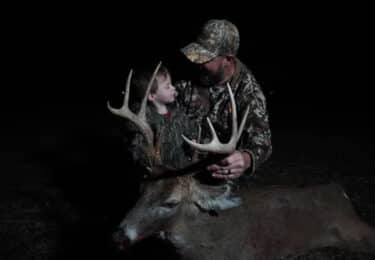What is Trapping?
Trapping has been around for hundreds of years. The Native Americans and European settlers used trapping as a means of income, and as a way to keep predator populations in check. The Native Americans used the hides of many furbearers in their garments and as goods traded to settlers and to other tribes. To the European settlers, trapping was a lifestyle and a source of income.
So what is trapping? To some it is a source of income and population control, but to many it is a tradition passed on from family or friends. How does the sport of trapping benefit you, and why is it important to turkey and deer hunters? Avid hunters can thank a trapper for doing his or her part in controlling predator populations, allowing them to harvest the next spring gobbler, or that trophy buck that they’ve watched grow from a button buck. Trapping is a means of protecting other wildlife populations, and insuring the conservation of furbearing species for many generations to come.
Why I Trap.
At the age of 12, I was introduced to trapping by my grandfather. I was always fascinated when he brought back a fox or raccoon. He gave me a few traps and lures to start, and gave me a few pointers on how and where to trap my target animals.
I wanted so badly to trap a fox, and I failed for many seasons. Soon I turned to raccoon trapping, as raccoon are much easier to trap. Over the years I trapped many coon, and although the deer stand is where I would rather be, I knew that this sport was going to become my favorite way to pass those post-season months. I learned more by reading trapping books and by watching the famous Robby Gilbert on Trapping Time TV. I started to gain understanding why being a trapper was so important to me.
 It is a tradition passed on to me from my grandfather, and was also an effective way to keep furbearer populations in check. Although I knew I could make an income with hides that I harvested that was not the reason why I trapped. I trap for the challenge of the sport, and I trap to bring all of the skills that I have learned together in one location, in a field or a stream, to catch my target furbearer.
It is a tradition passed on to me from my grandfather, and was also an effective way to keep furbearer populations in check. Although I knew I could make an income with hides that I harvested that was not the reason why I trapped. I trap for the challenge of the sport, and I trap to bring all of the skills that I have learned together in one location, in a field or a stream, to catch my target furbearer.
Today, I still keep that tradition alive, and since then I have trapped many raccoon, fox, coyote, and bobcat, as well as many other furbearing species. I cannot thank my grandfather enough for introducing me to the sport of trapping.
 Introducing Youth and Women to Trapping.
Introducing Youth and Women to Trapping.
In today’s rat race of life, it is difficult to get youth and women involved in the sport of trapping. I am blessed to have my wife involved with me on the trap line. In my fifteen years of being a trapper, I’ve never had a partner, and it is great to see a woman involved in the sport.
I also introduced a new youth to the sport of trapping, and he is eager to accompany us on the line whenever he gets a chance. The great sport of trapping is a dying art due to the low fur prices, and the time-consuming nature of a trap line. But I believe there is still hope for the sport, through getting more and more youth involved. The youth are the future sportsmen, so take the time to get your wife, son, daughter, or a new youth involved in the sport. Keep the tradition alive and be a positive role model.
Tyler is very active in the outdoors to see more of Tyler’s exploits follow him on Facebook Tyler Heeter
To see more of Cervicides offerings follow us on IG Cervicide and on Deer Slayer TV



